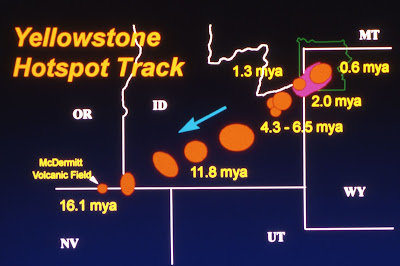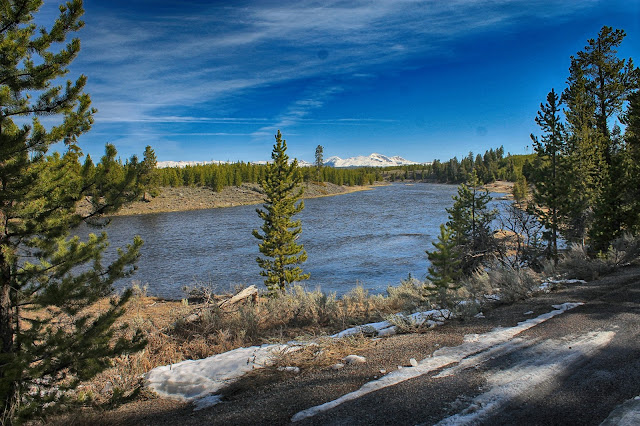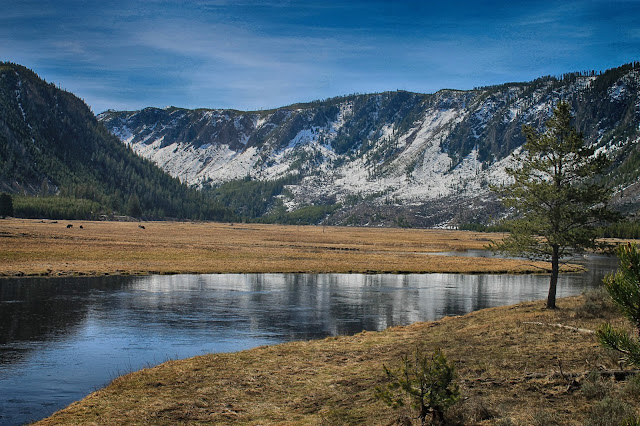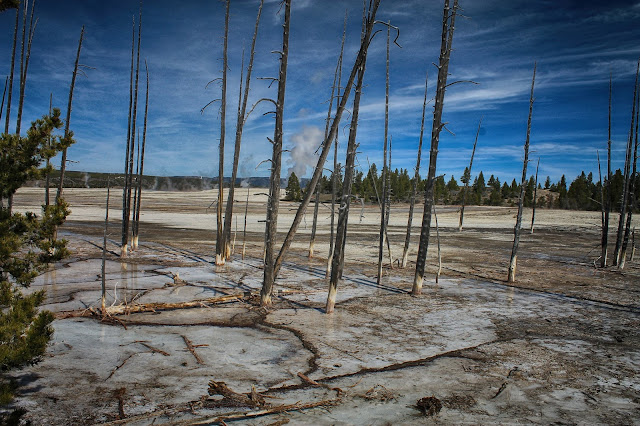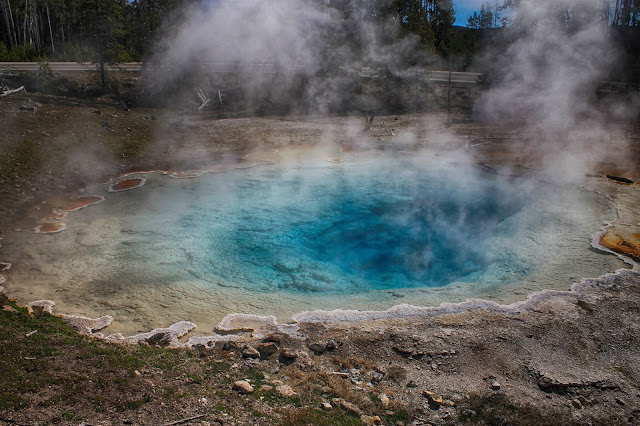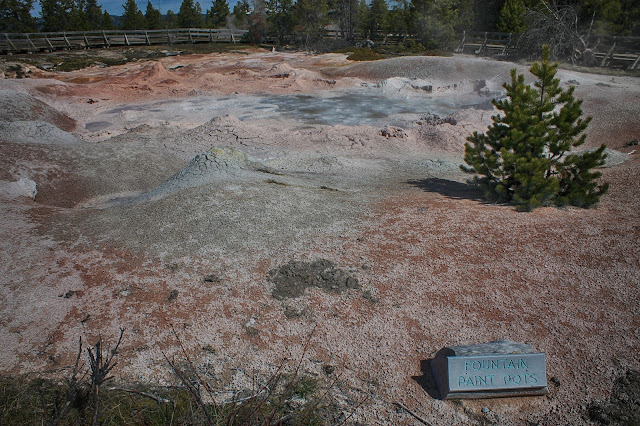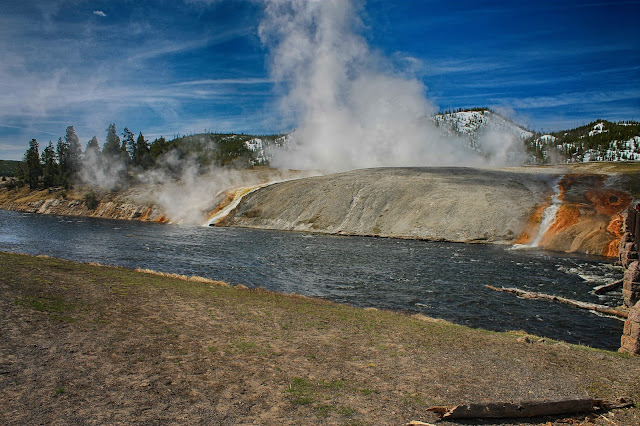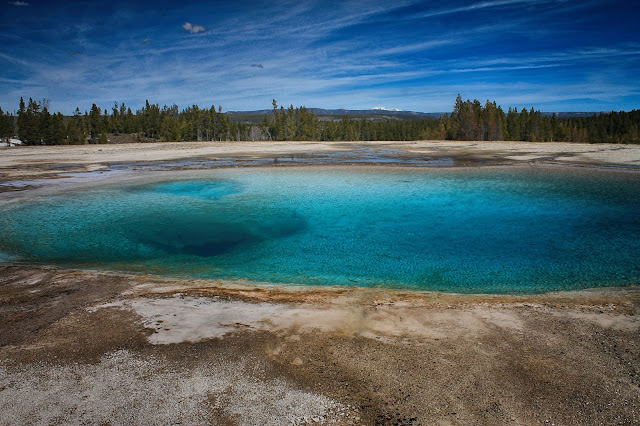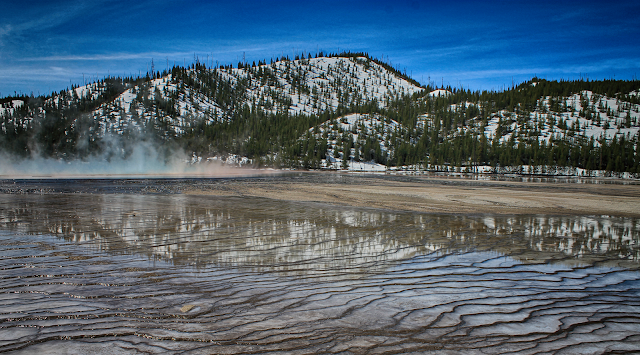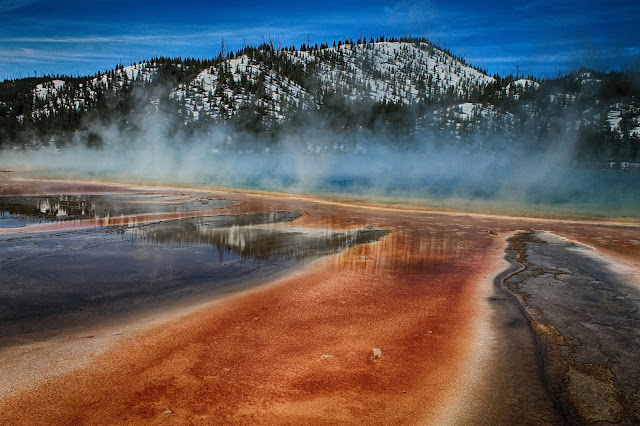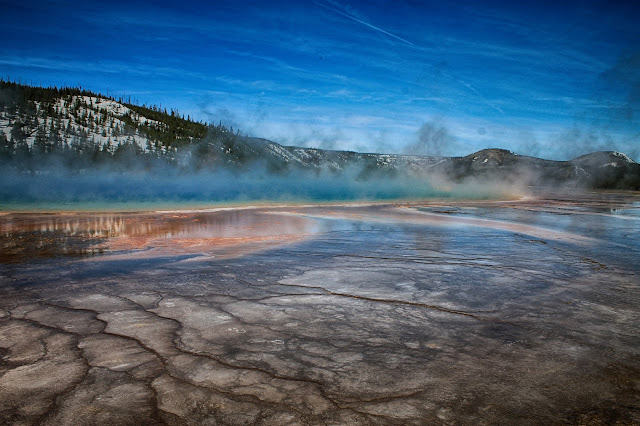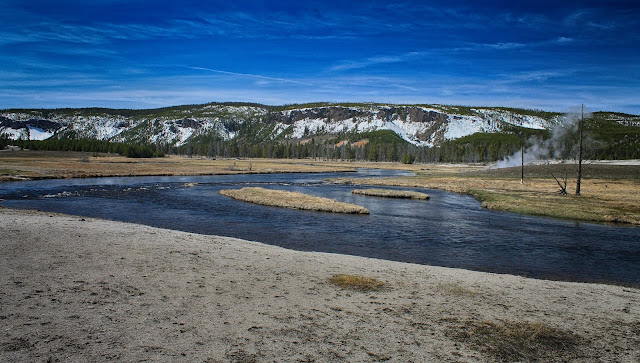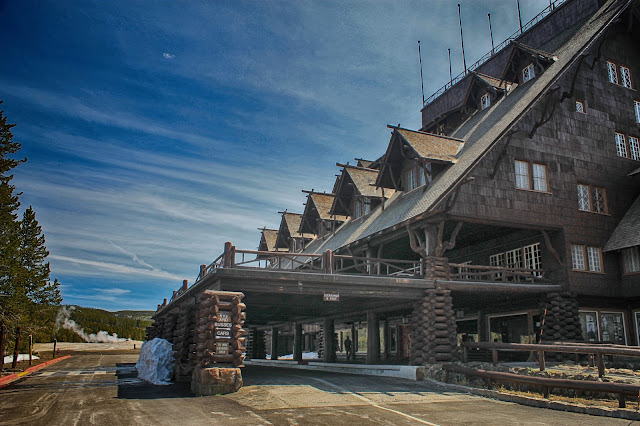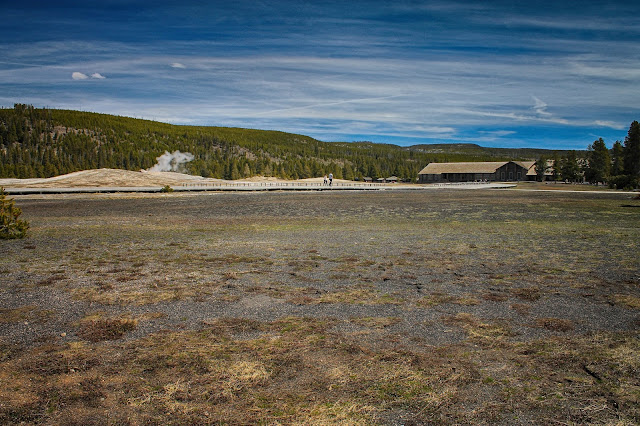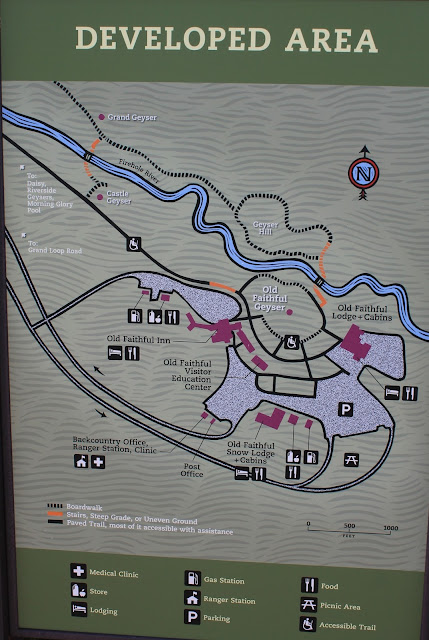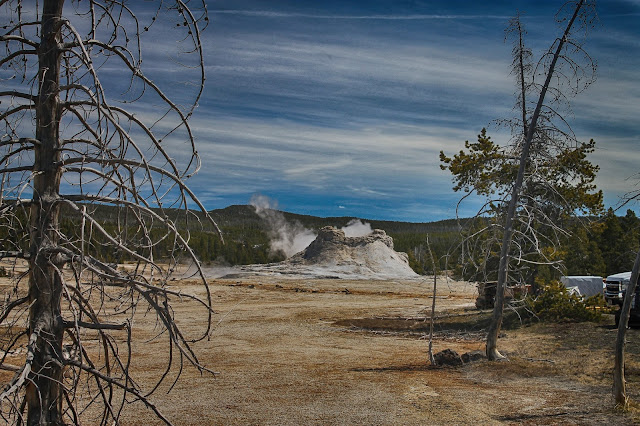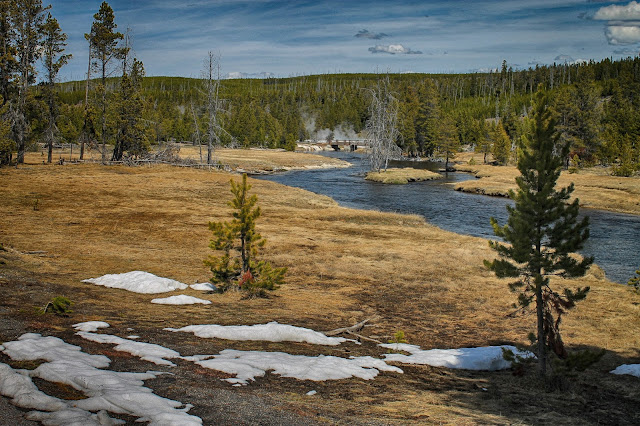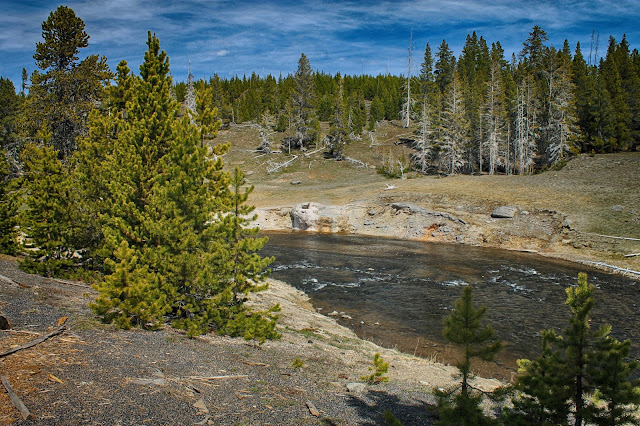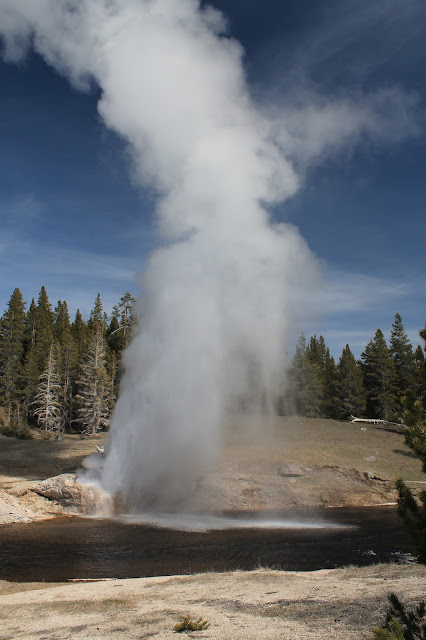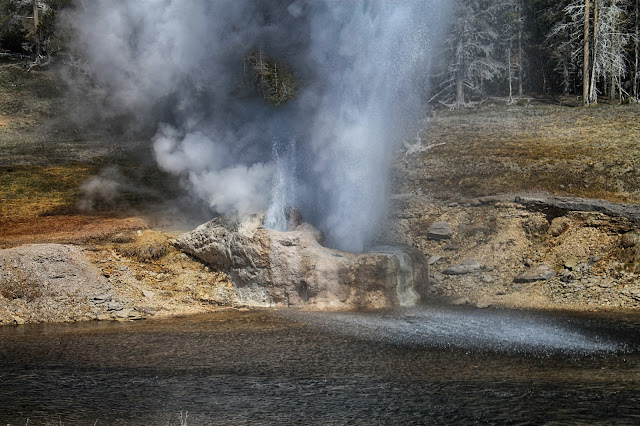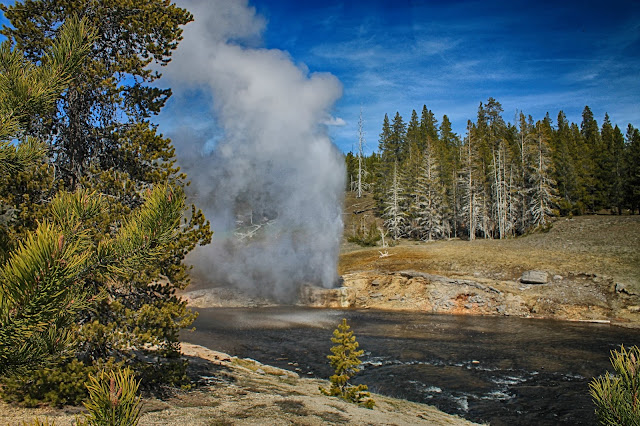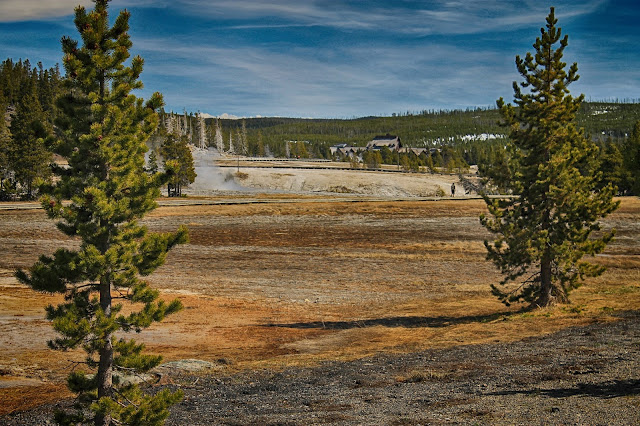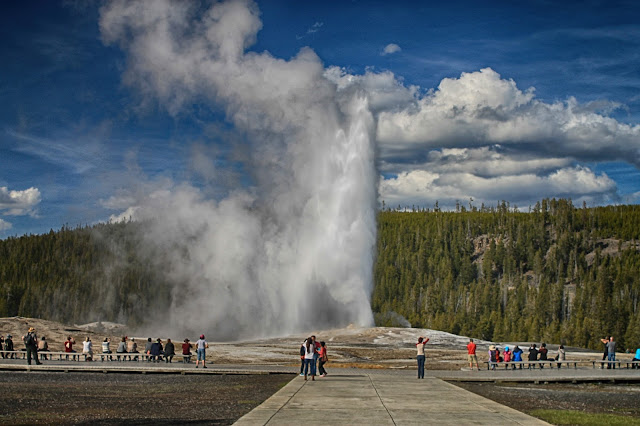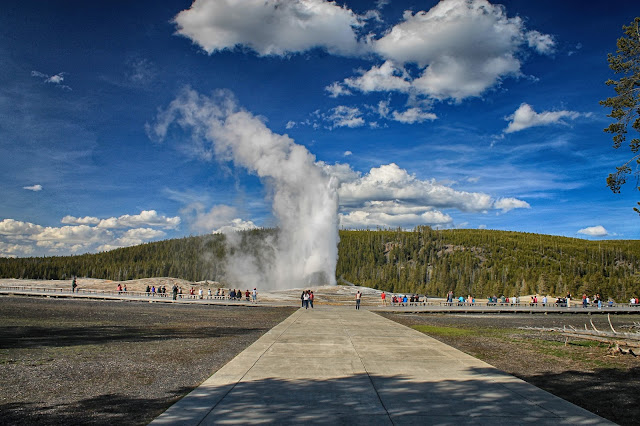Yellowstone SW, Early Spring
Yellowstone SW, Early Spring
Madison River, Firehole River, Grand Prismatic Spring, Old Faithful
Come see Yellowstone like few see it - in early Spring before the grass turns green, before the animals completely lose their winter coats, and before the crowds arrive. This trip covers southwestern Yellowstone from West Yellowstone to Old Faithful.Yellowstone is mostly a 2-season park, winter and summer. The rarest experience is to visit in early Spring when the snow has barely melted off the roads and fields, and parts of the park are still locked in by snow drifts. The animals are shedding their winter coats and getting used to tourists again, the rivers and streams are flowing high, and there are hardly even footprints on the trails and viewpoints. This trip will show you Yellowstone while the pines are yellow-green and the hills and meadows are rich browns.
Travel Through Yellowstone
Route: Start at West Yellowstone, accessible by US highways 20 and 191. Enter the park and follow the Madison River to Madison Junction. Turn right towards Old Faithful.Time: This route is a one-day trip, although I highly recommend spending an additional full day in the Upper Geyser Basin where Old Faithful is just one among many geysers.
Vehicle: Any, but RVs, trailers, and buses are not allowed on the narrow by-roads like the one along Firehole River.
Planning: Always plan ahead for Yellowstone, especially for lodging. In off-season, check to see exactly what roads and facilities are open -- never assume. Check the Park Website.
Lodging: Campsites and hotel rooms in the park fill up months in advance, as do some of the motels in nearby towns like West Yellowstone, so plan well in advance. Staying in the park will save you 30-45 minutes of one-way drive time per day compared to West Yellowstone.
Food: Check with the park website to make sure what facilities are open on the dates of your visit. Always plan to carry extra food and water with you - you'll use it.
Considerations: The areas you'll visit in Yellowstone are between 6800 and 8200 feet elevation, which means you'll tire faster than you're used to, sunburn quickly on sunny days, and the weather can be amazingly variable. Breathe heavily, use sunblock, and watch the weather forecasts.
Photography Tip: At high altitude, a polarizing filter does amazing things to the sky and water. Use a good camera, not just an average phone. For video of geyser eruptions, a tripod will vastly improve your video.
Cautions: Follow all park rules! Every year, someone goes off the trail and gets burned or hurt by an animal. The hot ground in geyser basins is quite treacherous and has hidden dangers like thin veneers over boiling water. Stay on trails and walkways.
Animals: The animals in Yellowstone are WILD. Bison are MEAN! That person you saw on a video close to a buffalo is very lucky to be alive. Elk are powerful and fast, and can be unpredictable. And don't even think about getting within 75 yards of a grizzly.
Roads: Obey speed limits! Park roads are constantly patrolled.
Park Courtesy: Pull completely OFF the pavement to view animals. Don't park on the pavement. Don't block traffic; not everyone wants to stop. If a bison is walking down the road, shoo him off by honking and annoying him. Don't walk out in front of all the other photographers, especially by going off-trail. Be discrete with selfies. Never litter. Never urinate except in a facility or outhouse. Try to keep your kids on good behavior. Be considerate of and patient with the large foreign visitor population and their varied ways of doing things.
Yellowstone Geology
Volcano Primer - learn the basic concepts and terms.By now you probably know Yellowstone is a caldera, which is a collapsed volcano. You probably also know it has had gigantic eruptions in the past, and is capable of doing it again. And it's above a hot plume in the mantle called a "hot spot." But did you know Yellowstone has not had an eruption in over 70,000 years? Did you know that younger eruptions have happened in Island Park, Craters of the Moon, and at several of the Cascades volcanoes?
The National Park service uses this simplified map to show where North America has ridden over the hot spot in the past 16 million years. The orange circles are caldera locations based on locations of volcanic rocks and geophysical data that can detect calderas underground. The hot mantle under a hot spot is called a "mantle plume," and it is hot rock but not magma. Magma only forms near the earth's surface where pressure is low enough to allow melting.
The Yellowstone caldera is about 30 miles (48 km) north-south and over 40 miles (64 km) east-west. It's a big caldera, but is only about the 10th biggest on Earth. A caldera outlines the magma chamber that emptied in a giant eruption. The magma erupts and the volcano and crust collapse, forming a caldera. The caldera is then the site of continued eruptions that, in the case of Yellowstone, fill in the caldera and spill out over its sides. You can see the Yellowstone caldera rim in only one place, and that is the cliffs between Madison Junction northwest to Gibbon Falls.
Madison River Canyon

The last giant eruption that created Yellowstone caldera was 640,000 years ago. It produced 1000 cubic kilometers of a rock called the Lava Creek Tuff that is present all around the region surrounding the park. For the 570,000 years after that, various eruptions filled in the caldera and even overflowed it. The last lava flow was 70,000 years ago.
Magma is still in the crust. Its center is under the north end of Yellowstone Lake, and is about 10,000 feet under the surface (that's not far!). Magma and residual hot rocks are the source of all the geothermal features in the park.
The Madison River drains the west side of the park. It flows west and then north, where it joins the Missouri in central Montana.
We were lucky to catch these bison walking across the Madison River a couple of miles from the park entrance.
Bison are enormous and surprisingly fast. I've personally seen a big bull outrun three horses and easily stride over a 5-foot fence. They are also extremely ornry, so don't get close.
Also along the Madison River, we found these two elks grazing in their shedding winter coats.
Where the Madison River cuts through the rim of the caldera, it has created these wonderful meadows. You'll usually see animals here like the bison in this picture, so prepare to use one of the turn-outs.
These boulders fell from the cliffs above the highway, possibly during the M7.3 Hebgen Lake earthquake in 1959. Many park roads were blocked by rockfalls during that midnight earthquake.
Yellowstone has an effective - if cantankerous - lawn mowing system.
We found these sisters relaxing on an island in the Madison River. Elk are big! These ladies are about 5 feet tall at the shoulder!
Take the Mount Haines turn-out. The peaks on both sides of you are the best place to see the thick rhyolite of the caldera rim.
On the north side of the road, look for these enormous, tall cooling joints that break the rock into columns. They form as the volcanic rocks cool and contract.
Along the Firehole River
Along the Firehole River (on the main road, not the separate loop) look for these obsidian cliffs. There is obsidian all over the park! It forms during an exceptionally hot eruption where all the minerals are melted. It doesn't cool any faster than other lava flows, but is glass because it started out so phenomenally hot.First stop is Fountain Paintpots. This is a good place to see how changeable conditions are throughout Yellowstone. When these pines were seedlings, the ground was suitable for growth, but the ground has gotten hotter and acidic water has killed the trees.
The water sure looks appealing in Silex Spring, but remember that it's hot enough to cook in. In fact, the water is super-heated underground where pressure prevents it from boiling. It can be over 700 degrees C underground!
The mud pots are one of Yellowstone's "must-see" attractions. Acidic hot water has dissolved the feldspar minerals in the volcanic rock, turning their remains into clay. The hot water and steam bubble up through the mud.
Just try not to grin at the sounds coming from the mud pots!
This vast volcanic plain is barren over large areas where ground temperature and water conditions make plant growth impossible. You wouldn't want to walk around out there, either - some hot pools are covered over by a thin veneer of rock. Somebody falls into covered pools every once in a while, and they have to live with hot dogs for legs.
Even the little pools at Yellowstone are rather spectacular! This one is called Clepsydra.
Midway Geyser Basin
The next stop is the Midway Geyser Basin, home to Excelsior Geyser and the famous Grand Prismatic hot spring. This picture shows the hot water pouring into the aptly named Firehole River.The cleverly named Turquoise Pool has phenomenally crystal-clear water.
Grand Prismatic Spring overflows onto the flats, creating these ripples where algae and minerals have built up. The colors of the pool are different colored archaea (kind of like bacteria) that respond to temperatures. The snow on the hills helps make interesting reflections.
Grand Prismatic Spring is the largest hot spring in the park at 370 feet (112.8 m) in diameter and over 121 feet (37 m) deep. Orange represents lower temperatures. The colors change a bit during the year as temperatures change.
A few years ago, some genius flew a quadrotor ("drone") over Grand Prismatic to get pictures (I can't blame him for wanting those pictures), and crashed it into the spring. Drones are now banned in most National Parks.
Your views of Grand Prismatic will depend on air temperature and wind speed & direction. You may want to visit it during different conditions.
Excelsior geyster was formed in a phreatic explosion when super-heated water flashed violently into steam. It bubbles continually in many places.
When the wind is right, you can see the bubbling clearly.
A sign at the geyser explains it all. I wouldn't want to be anywhere near when it erupts again!
Next place you can stop is Biscuit Basin, shown here. Fairy Falls is in the far right corner of the basin, and is worth the hike in the summer and fall.
Upper Geyser Basin and Old Faithful
Old Faithful Inn is one of the National Parks system's great buildings. It opens in May each year, and so was not yet open on this visit.This peek through the window of the closed Inn is probably the only time you'll see it with no people. When I visit in the summer, I'll post pictures of the incredible, memorable multi-story log lobby.
The Inn with the remains of snow drifts.
One of the most significant events in the Old Faithful Inn's history was when it was surrounded by the 1988 wildfires. Picture from Boise Guardian.
That's Old Faithful steaming, with as few people in front of it as you'll ever see. Snow had only been off the fields for about a week, so they were still these lovely browns.
The Visitor Center at Old Faithful is a terrific modern interpretation of the Old Faithful Inn. It has excellent restrooms, a theater you really should see, explanatory exhibits, and a gift shop.
The Visitor Center window looks directly at Old Faithful. You'll also find predicted eruption times for all the geysers here.
The big question: How do geysers erupt, and why are some predictable? As this sign explains, it all depends on the underground plumbing system. If a geyser had a uniform flow of water coming through a uniform pipe, it wouldn't erupt, it would be a spring. But the underground system can be complicated with various size pipes and chambers. Geysers can even be interconnected with springs and each other.
If a chamber or large passageway becomes filled with steam, that can inhibit the rise of hot water for a while. When the water builds up enough "push" from its bouyancy, it can push through the blockage and rise toward the surface. Near the surface, hot water flashes to steam and - voila! - eruption!
A big mistake too many tourists make is they hop out of the car, watch Old Faithful erupt, then leave. Boring! The really interesting geysers are all the other ones in the basin! Let's look at some of them.
Panorama of the geyser basin. Can you see the lone bison?
Castle Geyser is a bit different from the others because it is made of silica, not calcium. That gives it that grey color and steep features.
That's Riverside geyser steaming in the distance.
Grotto geyser has lots of little caves on it that splash and steam during eruptions.
We were lucky enough to see one of the unpredictable eruptions from a pool next to Grotto Geyser. Water and steam shot about 25 feet high from a plain pool.
Then not long after, Grotto itself erupted. The water shoots only about 20 feet high, but is accompanied by loud splashing, sloshing, and roaring from its inner caves.
Grotto Geyser erupting.
In this view, you can see the small caves that it's named for. They emanated sounds, steam, and water.
Riverside Geyser erupts with a loud jet-like roar! The water column (not the steam) in this wide-angle picture is about 75 feet tall!
That's a 75-foot water column shooting with a roar over the river!
Riverside Geyser's eruption lasts just over 20 minutes, so you have plenty of time to enjoy it. It's also one of the most predictable geysers in Yellowstone, so get the forecast eruption time at the Visitor Center.
Close-up, you can see the water jetting out of the small vent and splashing on the water.
When an eruption lasts this long, you can't help but take a bunch of pictures!
The Roc Doc waits for Old Faithful to erupt.
The Hat at Old Faithful.
Old Faithful's eruption begins with a flood of water, then this high geyser of water and steam. Be quick with your pictures! The peak only lasts about 20 seconds. If you're too close, you may not get it all in your photo. Challenge: Try to get a non-winter picture like this with fewer people in it!
Try to get a summertime picture with this few people in it!
Frostop, Ashton
The Frost Top in Ashton, Idaho is a great stop on U.S. highway 20 southwest of Yellowstone. It's a 60's vintage grill with fantastic fries, burgers, and floats. They even make a mean fish sandwich, and will serve you in your car! Try the root beer - it's great!Related posts all have the "Yellowstone" label.
Related Websites:
Yellowstone Volcano Observatory
Recent Earthquakes in Yellowstone
Park Website
B.S. - Common Misconceptions
"Yellowstone is overdue for an eruption." Bunk! Volcanoes don't have schedules. While it is true that a caldera-producing eruption could wipe out much of life on earth, it's so extremely unlikely to happen that it's not even considered in hazards analysis in the U.S.
"Scientists are covering up the danger of a Yellowstone eruption." Baloney. The first people that would advertise a pending eruption would be the scientists watching Yellowstone. There is absolutely no incentive to do otherwise.
"An eruption could take us by surprise." False. Since Mt. St. Helens' eruption in 1980, scientists have perfected the signs of an eruption - volcanic tremor swarms, ground swelling, and increased gas emissions. All 3 must happen together. All are being monitored extensively. We'll have warning before any eruption.
M.S. - More Science
Good geologic overview from University of Montana
Another good overview from the U.S. Geological Survey
Ph.D. - Piled Hip-Deep
Geologic map of Yellowstone National Park by the USGS

